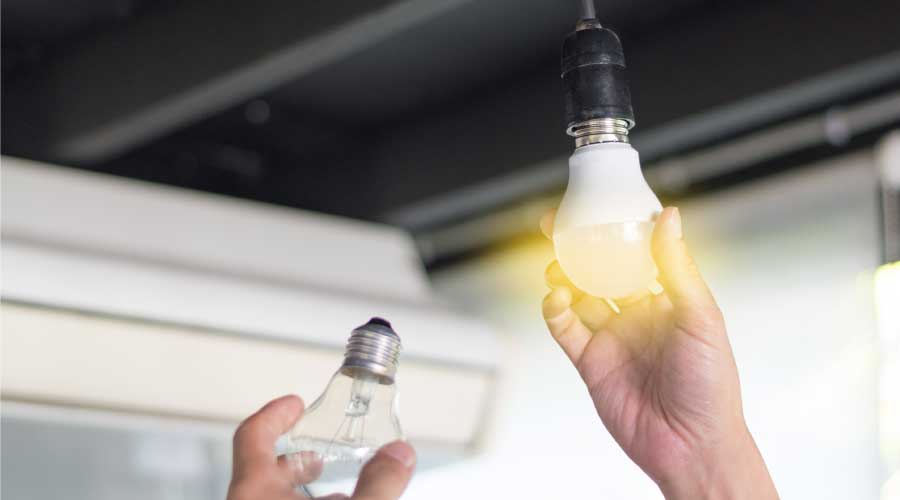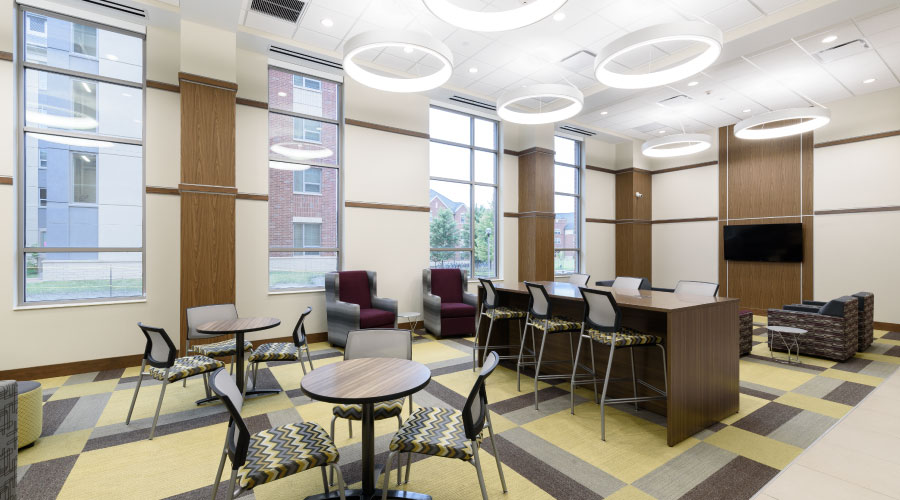Proper Lighting Conditions Enhance Student Productivity
In a classroom setting, lighting impacts how well students can concentrate on tasks
By Ashley Beebe, Contributing Writer
How a room or building is lit can impact a person’s productivity and health, positively or negatively.
Studies have shown that lighting can affect our emotions, eating habits, mental health, sleeping patterns, energy levels, work habits and more, so it’s important and necessary to have proper lighting in rooms and buildings.
More specifically, in a classroom setting, lighting impacts how well students can concentrate on tasks and their overall productivity. Strategies, including the use of natural light, task lighting that reduces eye strain, dimming controls to reduce light intensity and fixtures that minimize glare and flicker, help students stay focused in an educational environment.
Paula Spiese, Sustainable Workplace Solutions principal, says lighting plays a pivotal role in enhancing productivity and facilitating effective learning environments.
“Insights from the WELL Building Standard and Fitwel certification underscore the importance of strategic lighting design in promoting health, well-being and performance within built environments,” Spiese says.
She adds that natural light promotes productivity and mood enhancement.
“Exposure to natural light is linked to improved mood and energy, significantly boosting productivity and engagement,” Spiese says. “It regulates circadian rhythms, leading to better sleep patterns and increased alertness.”
Students in classrooms, with ample natural light, have been reported to achieve higher test scores and display greater engagement, emphasizing the critical role of architectural design in educational settings, she adds.
Task lighting provides focused illumination on work areas, reducing eye strain and fatigue.
“This is essential for tasks requiring prolonged focus, thereby enhancing productivity and learning,” Spiese says.
Adjustable task lighting also allows individuals to tailor their lighting environment to specific tasks, which improves comfort and efficiency.
Dimming controls and light intensity adjustments that mimic natural daylight patterns support circadian rhythms, enhancing the well-being and concentration of individuals throughout the day.
“The ability to adjust light intensity offers the flexibility to create optimal lighting conditions for various activities, catering to the specific needs of occupants,” Spiese says.
Light fixtures, designed to minimize glare, can prevent visual discomfort and headaches, maintaining focus and productivity, Spiese adds. Reducing flicker is also crucial for sensitive populations, such as children with autism. LED lighting with proper drivers significantly reduces flicker, ensuring a comfortable environment for all.
Color temperature and personal control are other elements that should be considered when thinking about the impacts of light. The color temperature of lighting influences mood and alertness, says Spiese.
Cooler temperatures are beneficial for concentration, while warmer temperatures are conducive to relaxation. Individuals with control over their lighting environment tend to be more satisfied and feel more comfortable, enhancing productivity and learning outcomes as well.
“Implementing proper lighting strategies, including natural light utilization, task lighting, dimming capabilities, and minimizing glare and flicker, can profoundly impact productivity and learning,” Spiese says.
Following WELL and Fitwel standards can create environments that — not only support the health and well-being of individuals — but also promote a sustainable and inclusive atmosphere conducive to productivity and learning, she adds.
Ashley Beebe is a freelance writer for Advantage Informatics.
Related Topics:












